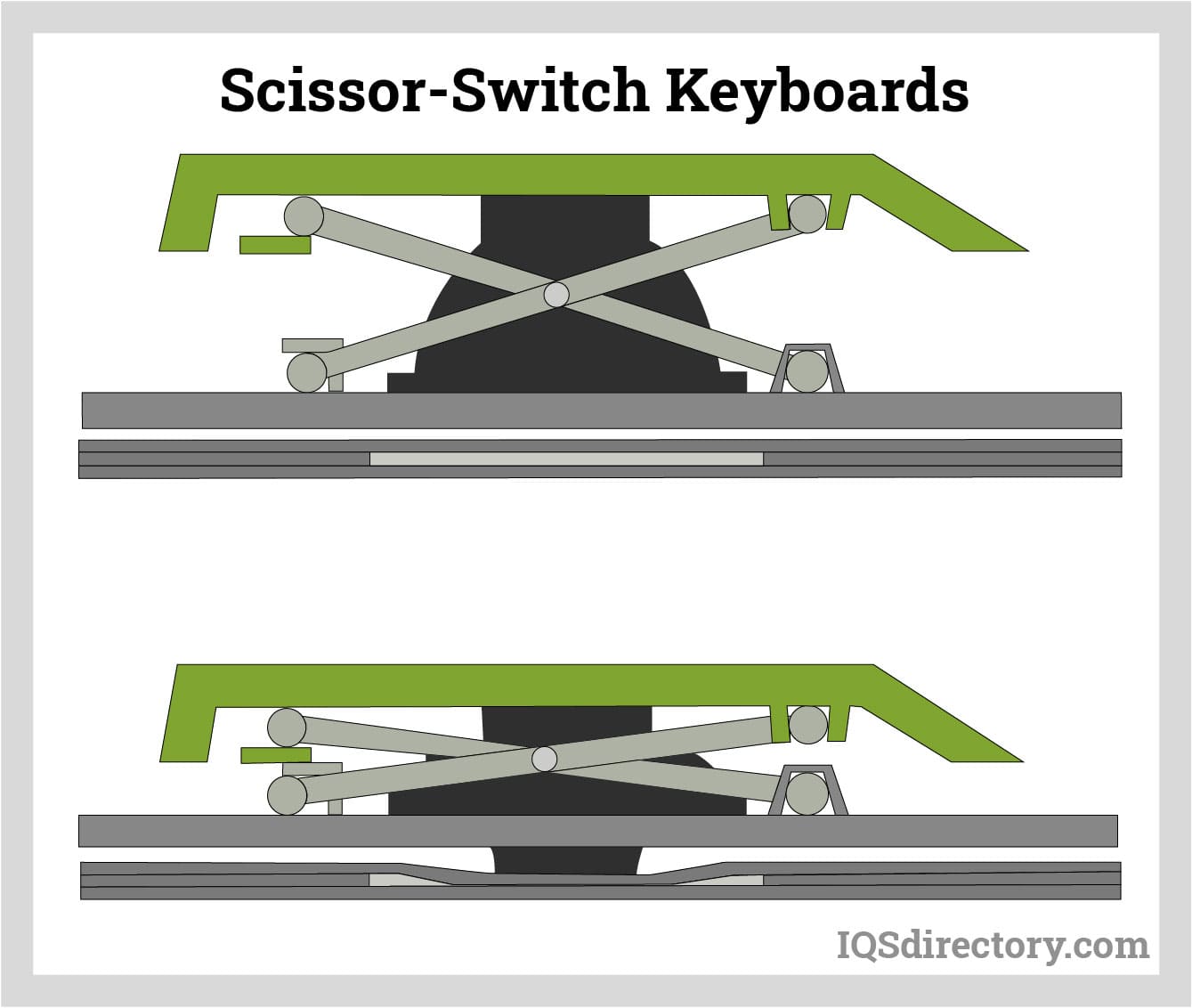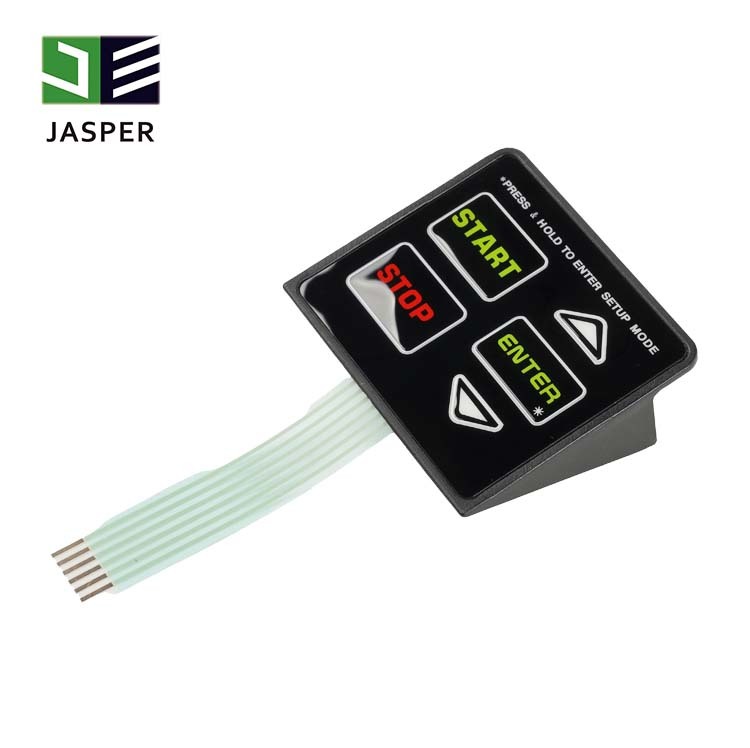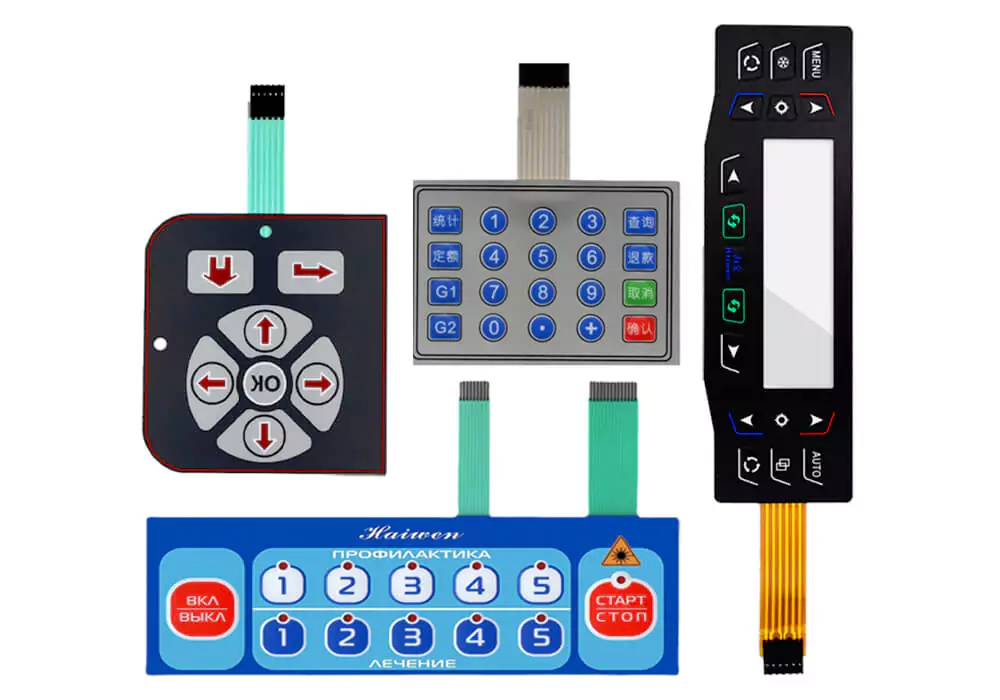The Production Process Behind Membrane Change: What You Required to Know
The production procedure behind membrane layer switches combines careful layout, product selection, and quality assurance. It begins with understanding the details of membrane layer switch design and advances with numerous phases, including material selections and printing strategies. Each stage plays a vital role in making sure performance and longevity. However, the complexities of layer construction and the extensive screening requirements may expose understandings that are not immediately evident. What exists past these foundational components?
Comprehending Membrane Layer Change Style
Although membrane layer buttons may show up easy in the beginning glimpse, their style entails complex factors to consider that ensure functionality and toughness. The design process begins with a thorough understanding of user needs, consisting of the interface's intended application and ecological elements. Comfort designs is a crucial element, as the format needs to assist in ease of usage while ensuring that responsive feedback meets user expectations.Moreover, the layering of elements, such as visuals overlays, sticky layers, and conductive traces, have to be specifically engineered. membrane switch. This split arrangement not just affects the switch's responsiveness however additionally affects its long life. Interest is provided to the sealing techniques utilized to secure versus wetness and dust, which could compromise efficiency. Additionally, style considerations include appearances, where color design and aesthetic quality improve customer experience. Ultimately, the layout of membrane switches balances capability, customer experience, and durability, guaranteeing that they fulfill the needs of numerous applications effectively
Products Utilized in Membrane Switch Production
When picking materials for membrane layer switch production, it is important to ponder both performance and resilience. The primary products include polyester and polycarbonate movies, which give versatility and toughness. These movies are often coated with glue to assure correct bonding to substrates. Conductive inks, commonly made up of silver or carbon, are important for producing electric connections within the button, permitting trusted operation.Additionally, a safety layer, such as a tough coat, is frequently used to boost scrape resistance and longevity. The choice of backing material, such as acrylic or foam, can significantly influence the switch's responsive feel and overall customer experience. Additionally, various ecological factors, including temperature level and humidity, should assist material choice to assure peak performance in particular applications. Eventually, the appropriate mix of materials adds to the membrane switch's functionality and life-span, making notified choices important for makers.
The Printing Process: Creating Graphics and Text
The printing process in membrane layer button production plays a considerable function in producing high-grade graphics and message. Different visuals style methods are utilized to guarantee aesthetic allure and performance, while mindful ink selection techniques are vital for sturdiness and performance. Recognizing these components is fundamental for accomplishing finest lead to membrane layer switch style.
Graphic Style Techniques
Graphic layout strategies play an essential role in the printing process of membrane switches, as they define just how graphics and text will eventually appear on the last product. Efficient visuals layout entails the tactical use layouts, colors, and typefaces to enhance readability and visual allure. Developers usually make use of vector graphics for scalability, ensuring that pictures continue to be sharp at various dimensions. Additionally, focus to contrast and placement is essential, as it affects individual communication and visual quality. The incorporation of branding aspects, such as logo designs, have to be taken care of with like keep brand integrity. In general, thoughtful graphic design methods add substantially to the capability and attractiveness of membrane switches, affecting individual experience and product efficiency.
Ink Selection Methods
Choosing the ideal ink is vital for achieving the wanted aesthetic high quality and toughness in membrane switch production. Different ink kinds are used, consisting of solvent-based, water-based, and UV-curable inks. Each type provides distinct characteristics, such as resistance, adaptability, and bond to ecological elements. Solvent-based inks are often preferred for their durability and vivid shades, while water-based inks are a lot more ecologically friendly yet may have restrictions in adhesion. UV-curable inks supply quick treating and durable performance. Additionally, color matching techniques guarantee that the chosen inks align with design specifications. Inevitably, the choice of ink should take into consideration variables such as application technique, substrate compatibility, and end-use needs to achieve remarkable cause membrane layer switch graphics and text.
Layer Building and Setting Up

Material Choice Process
A cautious option of products is necessary in the manufacturing process of membrane layer buttons, as it straight influences functionality and resilience. The key materials utilized consist of polyester, polycarbonate, and different conductive inks. Polyester is usually preferred for its superb resistance to chemicals and abrasion, making it suitable for rough atmospheres. Polycarbonate, on the various other hand, supplies premium clearness and influence resistance, which is advantageous for applications needing presence and effectiveness. Conductive inks, commonly made up of silver or carbon, are crucial for producing trusted electric paths. Additionally, the selection of adhesive materials influences the total integrity of the button - membrane switch. Examining elements such as environmental exposure, tactile responses, and aesthetic needs guides suppliers in picking the most effective materials for their certain applications
Layer Adhesion Methods
Adhering layers in membrane switch construction is a vital procedure that guarantees capability and long life. Various attachment methods are used to protect perfect bonding between layers, which usually consist of the usage of adhesives, heat, and pressure. Pressure-sensitive adhesives (PSAs) are generally used for their convenience of application and immediate bonding capabilities. Additionally, thermal bonding techniques can be applied, where warmth is made use of to activate glue residential properties, safeguarding a solid bond. The selection of bond approach mainly relies on the products involved and the specific application requirements of the membrane layer button. Correct placement and uniform application of adhesives are necessary to protect against flaws, protecting the switch runs effectively throughout its designated life expectancy.
Quality Assurance Actions
Guaranteeing quality assurance during the layer construction and assembly of membrane switches is important for maintaining performance and dependability. This procedure typically includes several essential actions, including complete inspections at each stage of manufacturing. Makers use get more sophisticated screening approaches, such as peel tests and attachment analyses, to confirm the integrity of layer bonds. Additionally, aesthetic examinations are conducted to identify any type of defects in printing or product variances. Environmental problems, such as temperature and humidity, are thoroughly kept track of to assure excellent treating and bond. Normal calibration of equipment helps keep exact manufacturing requirements. By carrying out these quality control procedures, producers can greatly lower the risk of product failure, guaranteeing that the last membrane changes fulfill the called for specs and client assumptions.
Evaluating and Quality Assurance Procedures

Innovations in Membrane Layer Switch Over Innovation
As advancements in innovation remain to progress, membrane buttons are benefiting from ingenious growths that boost their capability and user experience. One noteworthy advancement is the combination of capacitive touch modern technology, which enables even more intuitive and responsive interface. This change not just boosts visual appeals however also minimizes mechanical wear and tear, extending the life-span of the switches.Additionally, developments in graphic overlay materials have led to enhanced durability and resistance to environmental factors such as dampness and UV light. These products now supply boosted clearness and illumination, further elevating the aesthetic appeal.Furthermore, the incorporation of wise innovation is changing membrane layer switches over right into interactive control board, allowing connectivity with IoT gadgets. This connectivity fosters a seamless customer experience, paving the means for applications in different markets, from healthcare to consumer electronics. Collectively, these developments setting membrane layer switches as critical parts in modern tool style.
Often Asked Questions
The length of time Does the Membrane Change Production Refine Take?
The duration of the membrane button manufacturing procedure can vary significantly. Variables such as complexity, materials made use of, and manufacturing volume influence timelines, with common manufacturing ranging from a few days to a number of weeks for conclusion.
What Are the Common Applications for Membrane Layer Buttons?
Membrane switches are commonly made use of in numerous industries, consisting of automobile controls, household home appliances, medical gadgets, and customer electronic devices (membrane switch). Their flexibility and resilience make them ideal for applications needing user-friendly user interfaces and dependable efficiency in varied environments
Can Membrane Changes Be Personalized for Certain Requirements?

What Is the Lifespan of a Typical Membrane Layer Change?
The lifespan of a normal membrane layer button varies, but normally, it varies from 1 to 5 million cycles. Variables such as use, setting, and worldly high quality substantially influence durability and total efficiency over time.

Are Membrane Layer Switches Over Ecologically Friendly?
The environmental kindness of membrane layer changes varies. Some products utilized might not be recyclable, while others can be environmentally friendly. The total effect relies on producing techniques and materials, demanding cautious factor to consider during option and disposal. The production process behind membrane switches combines careful style, material selection, and high quality control. It starts with comprehending the details of membrane switch style and proceeds through different phases, consisting of product options and printing methods. When choosing materials for membrane layer switch production, it is necessary to contemplate both efficiency and durability. A cautious selection important source of materials is crucial in the manufacturing procedure of membrane switches, as it straight influences capability and longevity. The selection of attachment method greatly depends on the products involved and the specific application requirements of the membrane layer switch.